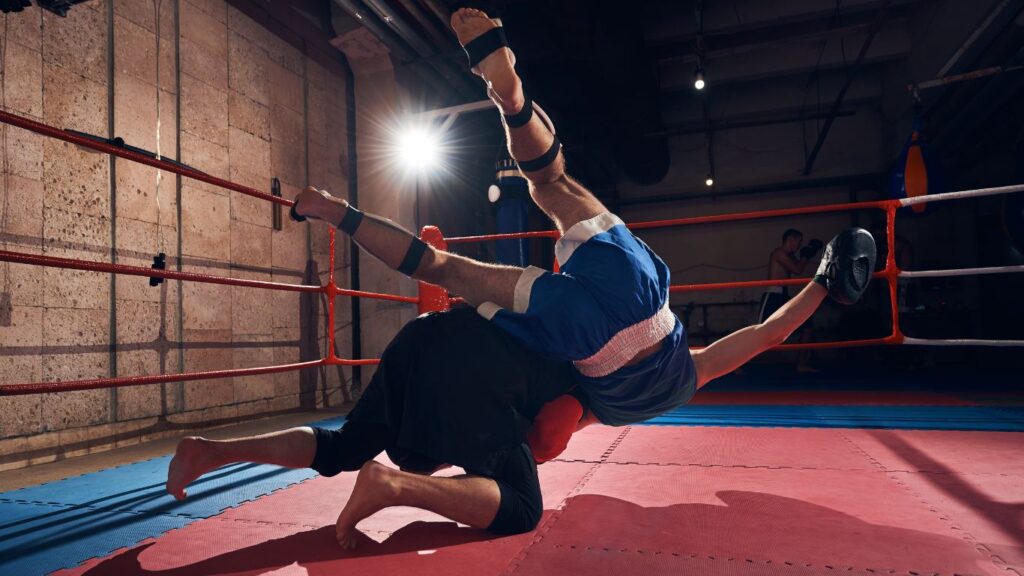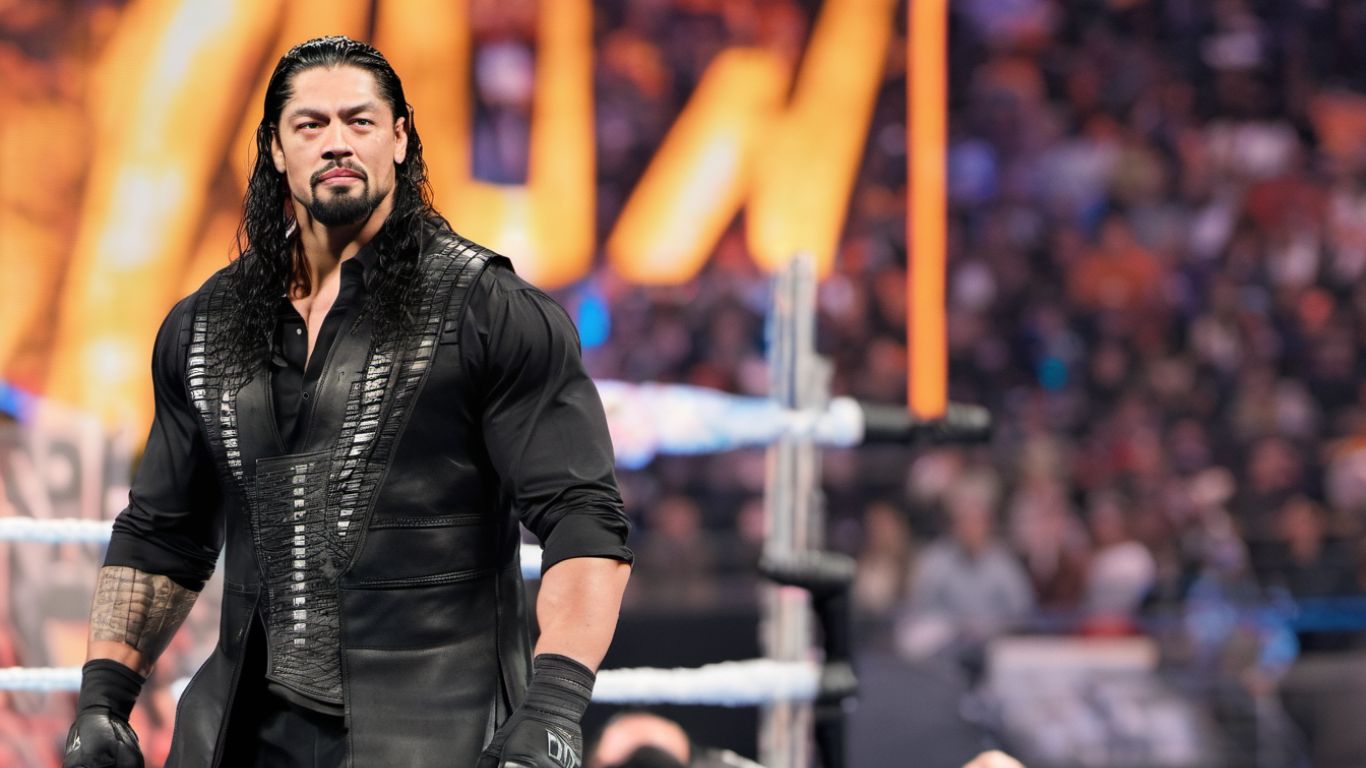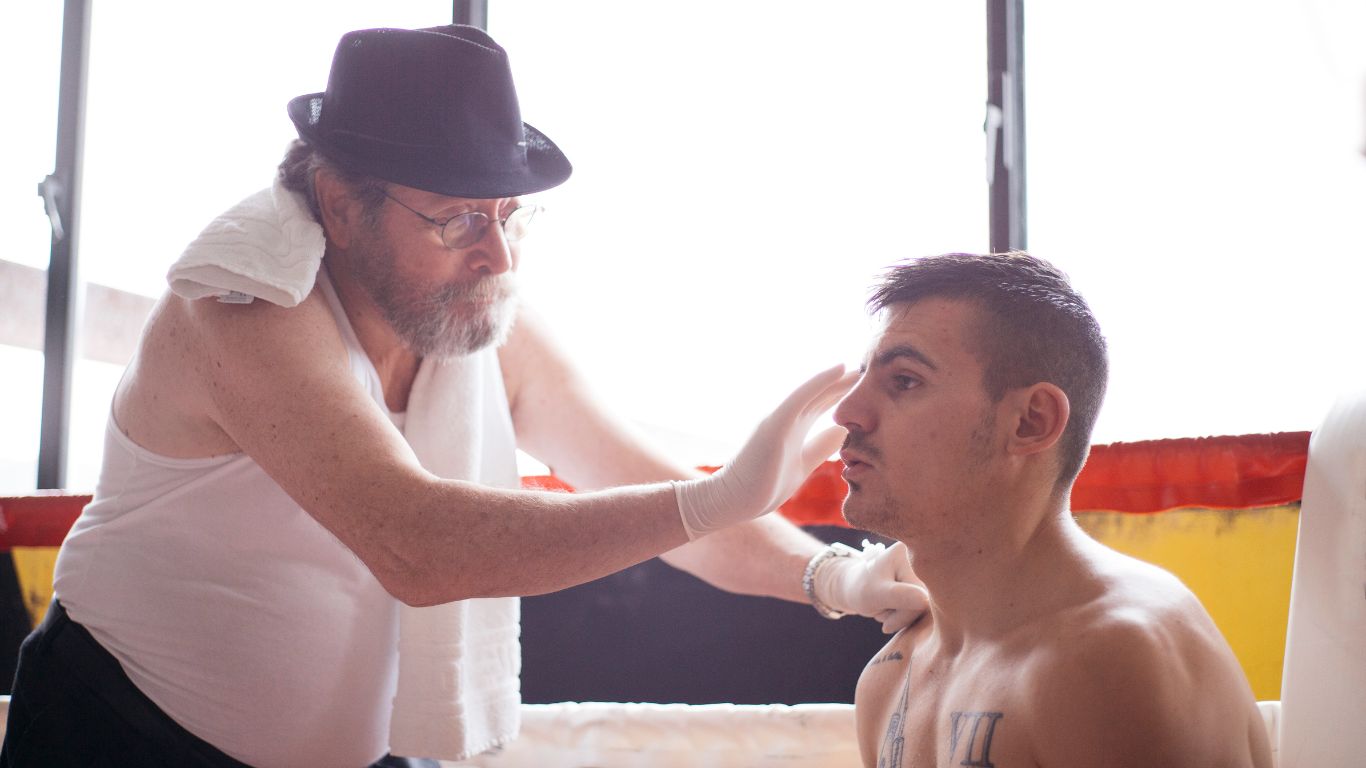In the often controversial world of sports entertainment, one question has reverberated among fans and skeptics alike for decades: Is wrestling fake? For the uninitiated, professional wrestling straddles the line between sport and performance art. The acrobatics, drama, and larger-than-life characters that parade across the screen have sparked intense debates about the authenticity of the matches themselves.

In this comprehensive blog, we’ll debunk common misconceptions about wrestling and shed light on the true nature of this complex industry. Whether you’re a seasoned wrestling fanatic or someone looking to understand what goes on beyond the glitz and glamour, this exploration into the heart of professional wrestling will leave you with a much deeper appreciation for the sport.
The Term ‘Fake’ and Its Implications
Before we explore the depths of professional wrestling, it’s crucial to address the loaded term ‘fake.’ In wrestling, ‘ fake’ often refers to the predetermined outcomes and scripted storylines rather than the physicality or athleticism of the performers. This distinction is pivotal, as it separates wrestling’s theatrical strategy from accusations of being purely a facade.
Couched in this frame, the debate shifts from a binary ‘real’ versus ‘fake’ to one about the skilled balance between scripting and athletic prowess that defines this unique genre.
Wrestling’s Roots in Performance
From its historical origins, when carnival acts evolved into staged public events, wrestling has always been as much about entertainment as competition. Pioneers like George Hackenschmidt and Frank Gotch laid the groundwork for the sport’s future, where charisma and showmanship would enrich it.
Scripting the Spectacle
Professional wrestling matches are just one piece of a larger narrative tapestry. Storylines are crafted with the intricacy of a television drama, complete with heroes, villains, and the morally complex in-between. The ‘scripting’ in wrestling refers not only to the matches but also to the dramatic arcs each wrestler is tasked with bringing to life.
Choreographing Combat
While the outcome may be predetermined, the physicality is not to be underestimated. Wrestlers meticulously plan the sequence of moves, or ‘spots,’ throughout a match. This choreography demands athleticism, timing, and trust between performers.
The Bumps and Bruises of Showbiz
Despite the cooperation behind the scenes, wrestling remains a physical sport with genuine risks. Wrestlers master ‘Bumping,’ or taking calculated falls, to protect themselves and their opponents. The impact can be substantial, yet the art of falling safely is a foundational skill of the trade.
Protecting the Business
Maintaining the illusion of a physical struggle is critical to wrestling’s success as entertainment. Wrestlers endeavor to ‘protect the business’ by preserving the suspense and emotional investment of the audience. This secrecy, known as ‘kayfabe,’ has traditionally extended to all aspects of a wrestler’s public persona, blurring the lines between their private and professional lives.
Kayfabe in the Modern Era
The internet and the rise of behind-the-scenes documentaries have chipped away at the enigma of kayfabe. Today’s fans are more aware of wrestling’s scripted nature, yet wrestlers’ commitment to character and storyline can still draw them into the magic of the moment.
The Ethos of Professional Wrestling
Beneath the spectacle lies a unique ethos that guides the world of professional wrestling. This ethos encompasses respect for the craft, dedication to the fans, and solidarity among the wrestling community.
The Business of Respect
In wrestling, respect is more than a scripted element; it’s a genuine currency. The act of ‘putting someone over,’ or making them look good in the eyes of the audience, is a sign of respect. Mutual respect between wrestlers often leads to the creation of memorable and meaningful moments in the ring.
The Fans Are Kings
The wrestlers’ connection with the audience is at the heart of professional wrestling. The ‘pop’ of the crowd, whether in cheers or jeers, guides the action in a symbiotic relationship. The visibility and accessibility of wrestlers in public spaces reinforce this bond, underscoring the role of the fan as a pivotal character in the drama.
Brotherhood and Legacy
Wrestling is a family not only in the literal sense—multiple generations of the same families often participate—but in the sense of the brotherhood that binds wrestlers. This camaraderie extends to preserving and enhancing the legacy of wrestling, respecting those who came before, and nurturing the stars of tomorrow.
The Future of Wrestling
The landscape of wrestling is continually evolving, with new platforms and technologies reshaping the way the sport is consumed. Initiatives like WWE Network, AEW, and NJPW are expanding the opportunities for storytelling and reaching a global audience, and the future looks as vibrant as the colorful characters populating the ring.
Beyond the Ring
Wrestlers are multifaceted entertainers who extend their impact beyond the squared circle. From acting roles to music careers, the reach of wrestling personas can be far-reaching. This diversification allows for the creation of richer characters and stories, blurring the lines between fiction and reality even further.
The Cultural Impact
Wrestling has a profound cultural impact, weaving itself into the fabric of popular culture through catchphrases, fashion trends, and more. It resonates with audiences as a unique form of expression that can span the arenas of both high and popular art.
Acknowledging the Artistry
No matter where one stands on the ‘Is wrestling fake?’ debate, it’s clear that professional wrestling is a craft that demands respect for the myriad talents and disciplines it encompasses. The physical and narrative elements merge to create an art form quite unlike any other.
Celebrating the Craft
The dedication, athleticism, and storytelling prowess of wrestlers should be celebrated without the cloud of skepticism that the term ‘fake’ often casts. Each performer brings something unique to the canvas of the ring, painting a picture that is as technically impressive as it is emotionally resonant.
Frequently Asked Questions
- Is wrestling scripted and choreographed?
Yes, wrestling matches are predetermined with planned outcomes and sequences. - Do wrestlers really get hurt during matches?
While injuries can occur, wrestlers are highly trained professionals who prioritize safety in the ring. - Are the rivalries and storylines in wrestling real?
Wrestling rivalries and storylines are scripted for entertainment purposes, but the athleticism and skill of the wrestlers are very real. - How do wrestlers communicate during a match?
Wrestlers use signals and cues to communicate with each other to ensure the match goes smoothly. - Are there rules that wrestlers have to follow in the ring?
Yes, there are specific rules and guidelines that wrestlers must adhere to during matches to maintain fairness and safety. - Can anyone become a professional wrestler?
Becoming a professional wrestler requires intense training, dedication, and passion for the sport. - Why do some people consider wrestling fake?
The term fake is often used because of the predetermined nature of wrestling matches, but the physicality, athleticism, and entertainment value are very real. - How do wrestlers protect themselves from injury during high-flying moves?
Wrestlers undergo rigorous training to learn proper techniques and ways to land safely during high-risk maneuvers.
Conclusion
The question of whether wrestling is ‘fake’ doesn’t have a simple answer. What is unequivocal, however, is the passion and hard work that goes into creating the world of professional wrestling. It’s a universe where reality and fiction dance a tango, one that has captivated audiences for generations and will likely continue to do so for years to come.
Wrestling: A Case Study in The Art of Illusion
In many ways, wrestling is an elaborate illusion, a theatrical microcosm where the outcomes are determined, but the performances are genuine. It is a shared experience, a communal theater where both performer and spectator blissfully and willfully blur the line between truth and fiction. Wrestling is a story told with the body, scripted but not fake, athletic but not a sport in the traditional sense. It is a unique form of entertainment, a captivating mix of athleticism, drama, and showmanship, a spectacle that is, in its essence, as natural as any other form of art. So, let us continue to suspend disbelief, embrace the chaos and excitement of the ring, and celebrate the craft and artistry of professional wrestling.









